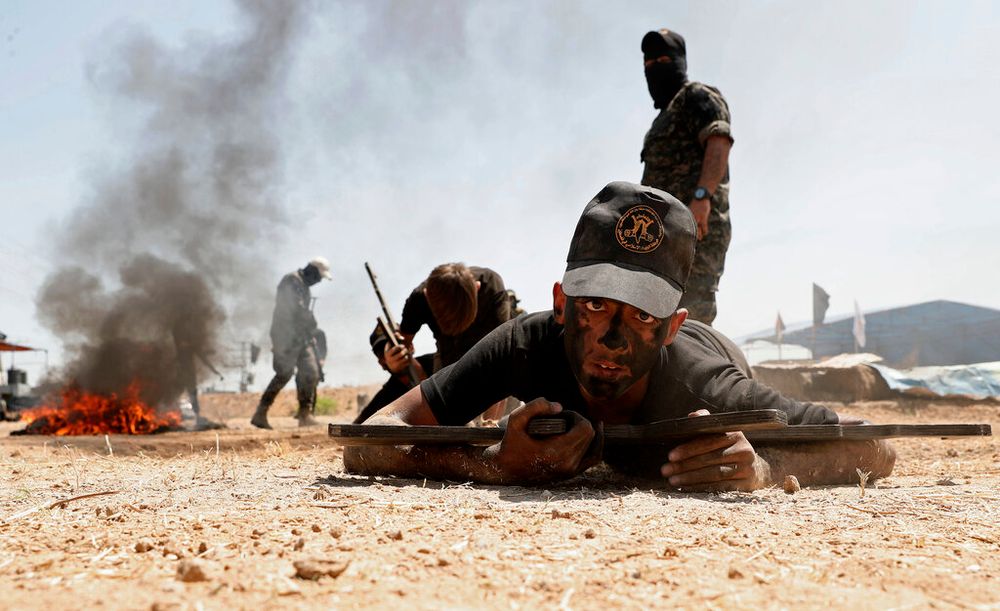Jake Pemberton

While both groups reject Israel’s right to exist, there are differences between Gaza’s two terrorist factions
In the latest regional escalation, Israel launched an offensive military campaign – codenamed Operation “Breaking Dawn” – against the Palestinian Islamic Jihad in Gaza.
While the enclave’s ruling faction Hamas has refrained from joining the Islamic Jihad with rocket launches in response, Israeli security officials said whether the Islamist group gets involved will determine whether the conflict spirals into an all-out war.
Both groups reject Israel’s right to exist, oftentimes through violent means, but there are stark differences between Gaza’s two main terrorist factions.
Hamas
Hamas – an acronym for Harakat al-Muqawama al-Islamiya (“Islamic Resistance Movement”) – is Gaza’s de facto ruling faction, a Palestinian Sunni-Islamic fundamentalist and nationalist group.
The movement is made up of a social service wing, a politburo, a media division, a security service, and its military wing the Izz ad-Din al-Qassam Brigades.
Upon winning the 2006 Palestinian legislative elections, Hamas ousted forces loyal to Palestinian Authority President Mahmoud Abbas, who lost in the elections but refused to hand over power of the enclave.
The group is designated as a terrorist organization by Israel, the United States and the European Union, among other governments and international bodies.
An offshoot of the Egyptian Muslim Brotherhood, Hamas was founded in 1987 soon after the First Intifada broke out, with aims to “liberate Palestine from Israeli occupation” and establish an Islamic state where modern-day Israel, the West Bank, and Gaza are.
Although unconfirmed, Israel estimates that Hamas’s military wing the Qassam Brigades is made up of several hundred members who are trained in Iran and Syria. The brigades also have an estimated 10,000-17,000 operatives, forming a reinforcement force for special circumstances.
Tactics of the military wing have included suicide bombings and, since 2001, rocket attacks.
Hamas’s rocket arsenal – though mainly consisting of homemade rockets with a range of under 10 miles – includes long-range missiles that have reached central Israeli towns such as Tel Aviv and even Haifa in the north.
Additionally, Hamas terrorists frequently fly balloons carrying incendiary devices toward Israel, and have carried out incursions into Israeli territory, most notably kidnapping Israeli soldier Gilad Shalit in 2006.
Historically, private donors mostly in Gulf Arab states provided much of the movement’s funding. Some Islamic charities in the West have also channeled money to Hamas-backed social service groups.
Israel also allows Qatar to provide hundreds of millions of dollars in assistance for Gaza residents through Hamas.
Today, Iran is one of Hamas’s biggest benefactors, contributing funds, weapons, and training.
Turkey is another stalwart backer of Hamas following President Recep Tayyip Erdogan’s rise to power in 2002. Though Ankara insists it only backs Hamas politically, it has been accused of funding Hamas military activities.
Palestinian Islamic Jihad
The Palestinian Islamic Jihad (PIJ) was formed in 1982, rising through the network of the Muslim Brotherhood and developing into a distinct organization influenced more by Iran’s Islamic Revolution.
Like Hamas, its goal is to establish an Islamic state in modern-day Israel and the surrounding Palestinian territories. But PIJ is the smaller of the two terrorists groups in Gaza, and is vastly outnumbered by the enclave’s ruling faction.
Based in Syria’s Damascus, the PIJ enjoys direct financial and military backing from Iran, and is a driving force in engaging in confrontations with Israel, sometimes undermining Hamas’ authority.
Israel, the US, the EU, and other governments consider it a terrorist organization.
Iran provides PIJ with training, expertise, and money, but most of the group’s weapons are homemade. In recent years, it developed an arsenal almost equal to that of Hamas, with longer-range rockets capable of striking central Israel.
PIJ terrorists have challenged Hamas by firing rockets on its own accord, often without claiming responsibility. While it has undertaken numerous attacks on Israeli civilians, including suicide bombings, it suffered extensive operations against its infrastructure carried out by Israel’s army throughout the years.
It masterminded several suicide bombings in Israel, the first one being the Tel Aviv-Jerusalem bus 405 suicide attack in 1989 which killed 16 civilians.
The organization upholds a secretive cell-based structure. Its armed wing, the Al-Quds Brigades, is also active in the West Bank, with main strongholds in the cities of Hebron and Jenin.